#lobopod
Text

A lineup of Cambrian critters at the Naturkunde Museum Stuttgart. If you can’t see most of them: they’re in the glass display at the bottom, with a moveable magnifying glass provided. And then there’s Anomalocaris.
Closer look at Hallucigenia:

1K notes
·
View notes
Text


Opabinia wondering whether it's worth eating a spiky, particularly small Hallucigenia
302 notes
·
View notes
Text
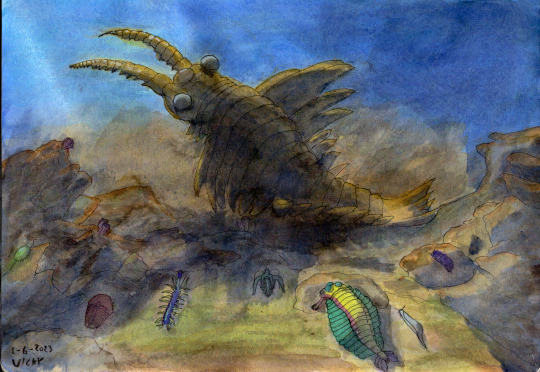
Mighty Anomalocaris stirs, spreading dust and terror throughout the Cambrian sea. Opabinia, Hallucigenia, Pikaia, Canadia, Burgessia, Marella, and Elrathia can only hope the rocks and ridges they cover behind will hide them.
#cambrian#anomalocaris#Opabinia#Hallucigenia#Pikaia#Canadia#Burgessia#Marella#Elrathia#hazelia#radiodont#arthropod#paleoart#my art#palaeoblr#lobopod#trilobite#chordate#sponge#cambrian explosion
175 notes
·
View notes
Text

Another extinct pixel critter, the lobopod facivermis. Wiggly!
[ID: A pixel art depiction of the extinct lobopod facivermis, rendered in two different shades of pink with the background in a gradient from light teal to dark teal. /ID]
16 notes
·
View notes
Text

Keep seeing posts about lobopods being problematic. It’s a worm with legs so maybe.
8 notes
·
View notes
Text

Burgess Shale buddies 🌊
192 notes
·
View notes
Photo

a fossil a day keeps the sad vibes away
hallucigenia is probably my favorite guy, it's just so funny to me that we thought its head was its butt for like 100 years
---
holographic stickers!
prints!
#paleoart#paleontology#procreate#mine#art#illustration#illustrators on tumblr#fossil art#paleozoic pals#hallucigenia#stickers#dinovember#dinovember2022#burgess shale#lobopods#palaeoblr
49 notes
·
View notes
Text
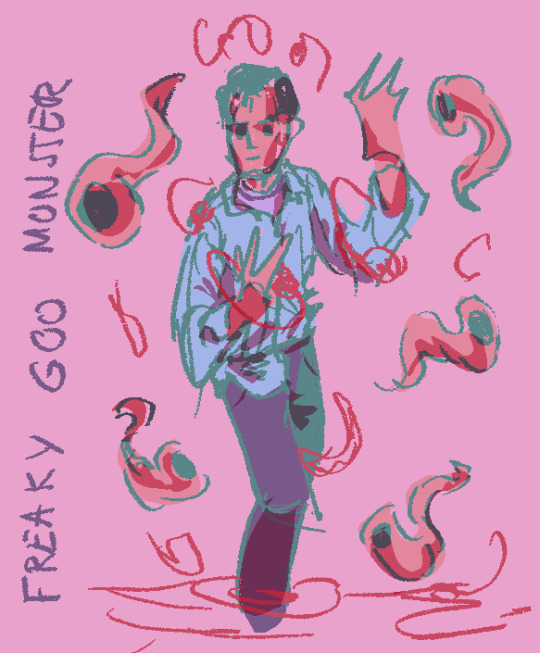
im too tired to finish anything so here have a lil sketch
good night :*
#my art#Crawford Tillinghast#'you wouldnt activate the resonator and turn into a freaky goo monster'#(those hands though)#i wanna paint this but.. with cambrian explosion creatures#lobopodes <3
16 notes
·
View notes
Text
im world of goo baby ..
8 notes
·
View notes
Photo
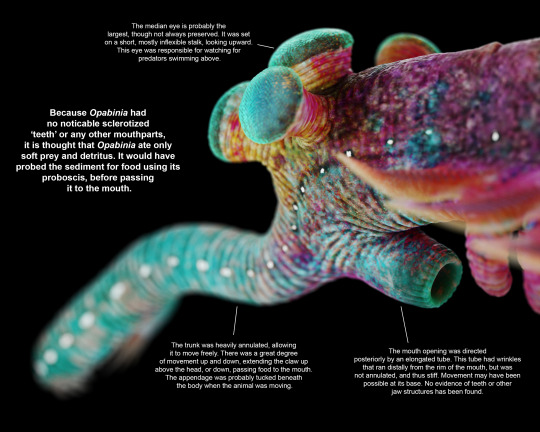

holy SHIT please read the whole thread and many more of these images right here, this artist put together an updated Opabinia reconstruction where every single one of these minute details (except coloration, obviously) are fully sourced making this most likely the first depiction factoring in 100% of current knowledge about it.
Even I didn’t know it had little feet like a velvet worm and could have walked around on them! I never knew exactly how the trunk is oriented or how many “teeth” it is! I especially didn’t know the mouth was that weird!
And I kind of assumed this since it’s a lobopod and all, but the whole animal was soft and squishy except for the eyes and the teeth. It did not have armor plates or a jointed exoskeleton like a lot of people portray. This also means all five of the eyes would have been able to bend and look around independently!
The eye structure in fossils also indicates that they would have PSEUDOPUPILS! That’s the pupil-like dot in the eyes of insects like mantises!
7K notes
·
View notes
Text
Phylum #16: Onychophora, the velvet worms!
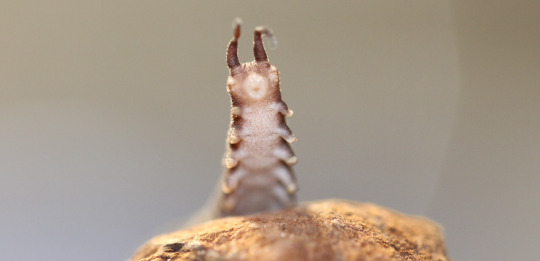

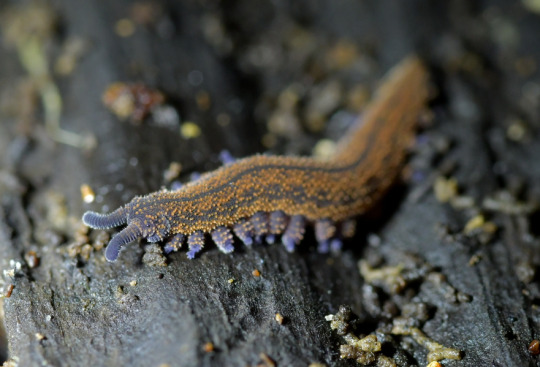
"Lobopods", unarmored relatives of arthropods, have a long and rich history. While early forms like Hallucigenia remain unclear as to their affinities, another lineage had already split from the first arthropods. Velvet worms still thrive today, having left the seas for rainforests and humid crevices.
Instead of the arthropods' articulated exoskeletons, velvet worms kept a softer, unarticulated cuticle, with tiny round "papillae" covered in bristles and scales providing their velvet-like appearance. They still moult their cuticle regularily, but do not gain new legs doing so - the babies already look like miniature adults!
Adapted to many terrains thanks to their flexible body and clawed legs, velvet worms are true ambush predators. They come with a special weapon: a glue-like slime, immobilizing prey and repelling predators, shot from appendages on each side of their mouth.
Velvet worms are also intelligent, social creatures. At least one species, Euperipatoides rowelli, is known for hunting together, living in groups of up to 15 individuals with complex interactions establishing their social hierarchy. Individuals within a group are often closely related, with most species giving live birth and taking care of their young!



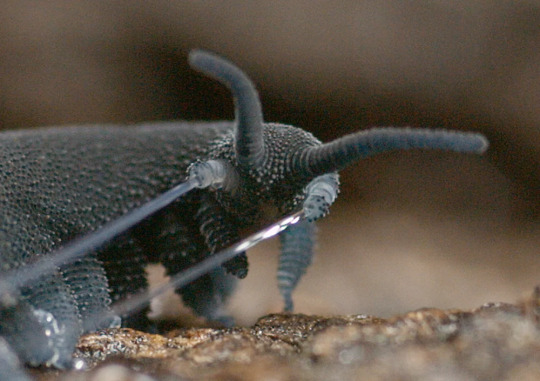
374 notes
·
View notes
Text
Uncomfy evolution fact:
The Lobopodians were primitive arthropod ancestors who resembled velvet worms.
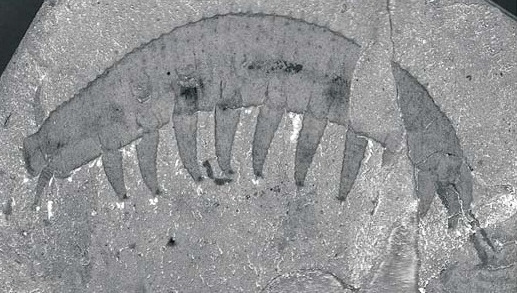
At some point in the Cambrian, a lobopod like this one evolved away its body, retaining only its head. The resulting animal is the tardigrade!

For the last half billion years this disembodied head has been one of the most successful animals on our planet.
36 notes
·
View notes
Text
Cambrian Seafloor Aquarium
Following up the last post, I made a second aquarium exhibit, this time focusing on the fauna of the Cambrian period. The Cambrian is an incredibly interesting point in prehistory, when many of our modern animal lineages began to diverge and started the evolutionary trajectories that we see today. In particular, the arthropods and their relatives (such as radiodonts and lobopods) greatly diversified, filling a wide variety of niches. As such, they are heavily represented in this exhibit.
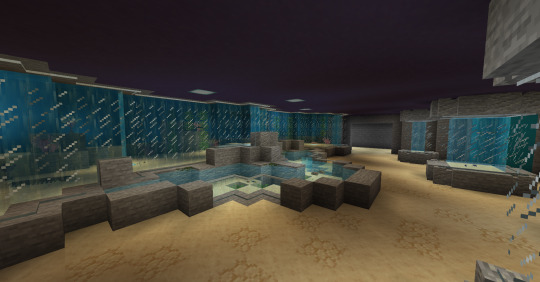
Fig 1. The whole exhibit
The main tank holds a few particularly large species. While most Cambrian animals were small, a few reached significant size. Exhibited here are the radiodont Laminacaris (a close relative of the better-know Anomalocaris) and the giant lobopod Omnidens, two of the largest genera from the Cambrian. I also chose to include Aegirocassis, a filter-feeding radiodont from the early Ordovician, even though it's slightly out of the timeframe the fauna otherwise represents.
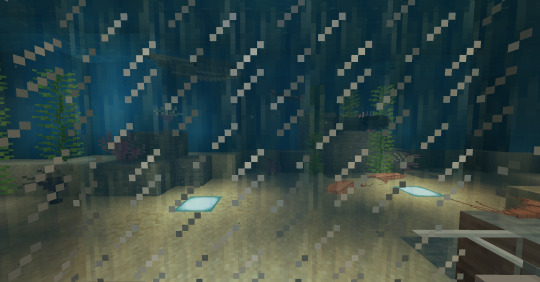
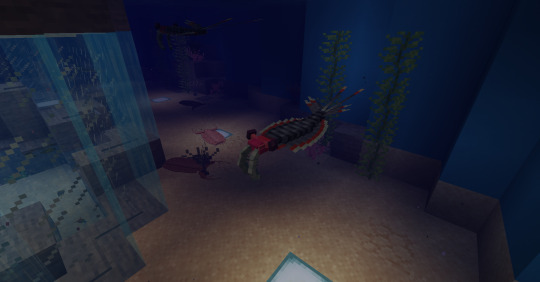
Fig 2 and 3. Species inside the main tank
Below this is a touch tank housing various hard-shelled arthropods that would feasibly survive being touched by visitors. Among these is Cambroraster, another radiodont, as well as several genera of trilobites and other early arthropods. I appreciate how the mod decided to depict the early arthropod Retifacies with the color scheme of a rubber ducky isopod.


Fig 4 and 5. The touch tank
Across the room, a number of smaller aquarium tanks display various other species from the Cambrian, many of them from the famous Burgess Shale formation. These include the well known Opabinia and Hallucigenia, as well as many more obscure genera such as Banffia and Tokummia.



Fig 6, 7 and 8. The smaller tanks
223 notes
·
View notes
Text
my favorite hallucigenia reconstruction fact is not only that it was reconstructed upside-down and backwards several times but also that when it died naturally its guts exploded out of its ass and this mass of exploded guts was mistaken as its head up until very recently
50 notes
·
View notes
Text
if im missing one you don't see, like opabiniids, put them in the tags!
53 notes
·
View notes
